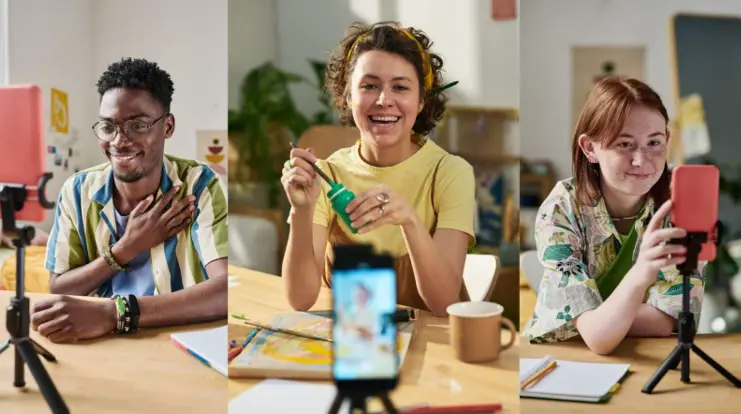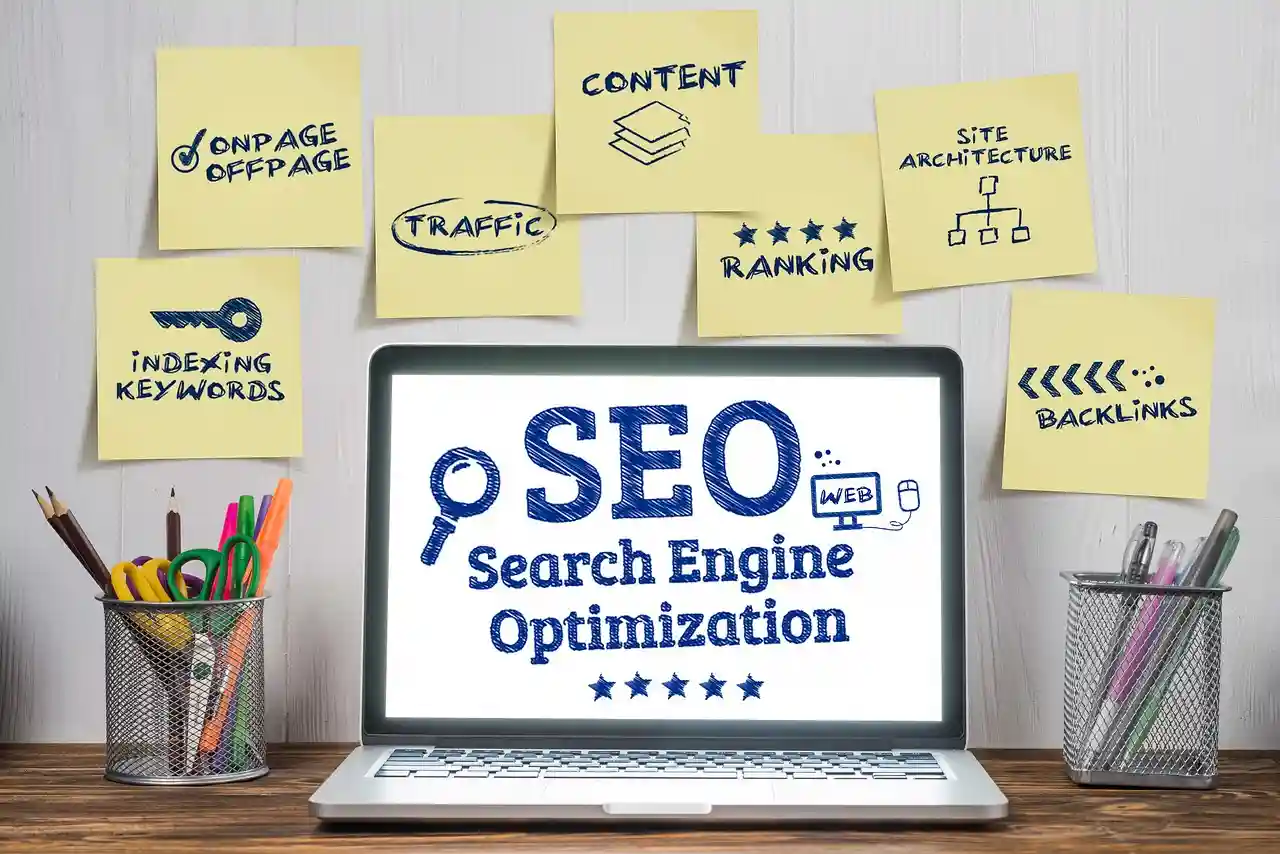
Most businesses aim to reach as many people as possible but what if narrowing your focus could drive even better results?
Hyperlocal social media marketing doesn’t just bring you closer to your audience; it puts your business right in their neighborhood. With an average of US population having 7.1 social media accounts per person, who would want to miss out on this advantage? But, what exactly makes this targeted approach so powerful? Is there a way to maximize its impact?
Everything To Know About Hyperlocal Social Media Marketing
Hyperlocal social media marketing is a focused strategy that aims to engage audiences within a specific geographic area. It is often as precise as a city, neighborhood, or even a street.
Unlike broad-reaching marketing, hyperlocal marketing taps into the pulse of a community, It aligns messaging with the unique interests, needs, and culture of a tightly-defined area.
This isn’t just marketing, it’s building a presence where your target customers live, work, and engage.
This could be as simple as sharing a post about a local event, using popular regional phrases, or even spotlighting local businesses.
Hyperlocal marketing allows you to show you’re not just familiar with the area, you’re part of it. And when audiences see that a business genuinely understands their community, they’re more likely to build trust and connect with it.
For example, a cafe in Austin might post about the local farmers’ market they source ingredients from or highlight favorite neighborhood spots for weekend activities. By creating posts that speak to familiar places or shared experiences, the cafe establishes itself as a valued part of the local community
Big brands can also succeed with this strategy!
Take Starbucks. Though a global chain, they’ve localized their marketing efforts by creating region-specific social media accounts and posts. Around major sporting events or festivals, they’ll tailor content to show support for local teams or reference area-specific events.
Benefits of Hyperlocal Social Media Marketing
Hyperlocal social media marketing brings significant advantages, especially for businesses aiming to build strong community connections.
- It creates a sense of connection by showcasing local landmarks, events, and other businesses. Instead of just promoting products. This approach builds a bond of trust and opens doors to fruitful partnerships.
- You can achieve higher engagement rates by focusing on what’s familiar and meaningful to local customers. For example, a bakery that highlights its locally-sourced ingredients isn’t just selling pastries, it’s connecting over shared values around sustainability.
- This approach can also increase conversion rates. When you create content for a specific audience, you’re speaking to people who are already interested in what you offer. They’re nearby and they’re likely to respond because it feels relevant to them.
- For businesses with physical locations, hyperlocal marketing is a driver of foot traffic. A local fitness studio, for example, could post workout schedules tagged by location to attract nearby customers who are ready to take action.
- This strategy is also cost-effective. With geotags, local hashtags, and user-generated content, every dollar goes further and reaches the right people at the right time.
- It helps establish authority and credibility in the area, too. When you consistently appear in local feeds and support neighborhood events, you become recognized as a reliable brand.
- Finally, hyperlocal strategies can serve as testing grounds. You can see what works in a particular location before expanding to new areas.
Should I Go For Hyperlocal SSM or Not?
Wondering if hyperlocal social media marketing is the right fit for your business? Here’s who benefits most from this approach:
- If your customers come to you, hyperlocal marketing can make it easier for them to find you. Ads targeted by location reach potential customers while they’re nearby.
- For any business offering on-location services, hyperlocal marketing increases visibility among locals who need your expertise.
- If your business thrives on local support, hyperlocal marketing is a great way to build strong community ties.
- For many areas, local events, festivals, and seasons create natural boosts in foot traffic and online interest.
- Hyperlocal marketing also offers a safe, effective way to test the waters before expanding into new areas.
A simple test? Check search engines or social media for terms like “coffee shop near me.” The first results are locally relevant and active. Hyperlocal marketing also uses this exact behavior, to help you stay visible where it counts most.
Real-Life Examples of Hyperlocal Social Media Content
Local Café Celebrating Neighborhood Art and Culture: A neighborhood café uses Instagram to promote “Art Fridays,” a weekly event where local artists display their work in the café. Each Friday, the café shares posts with geotags and hashtags specific to the neighborhood, such as #EastVillageArt or #SeattleArtScene.
By featuring local artists and tagging nearby areas, the café taps into the local art community and draws customers interested in supporting local talent.
Boutique Fitness Studio Showcasing Community Events and Partnerships: A small fitness studio in Austin creates content around nearby events like charity 5Ks, yoga in the park, or local food drives. On social media, the studio posts stories and photos highlighting its participation in these events, tagging local businesses or event organizers.
They might even partner with a local smoothie bar to offer a “post-workout smoothie special” to customers who visit both locations.
Restaurant Promoting a Seasonal Local Produce Menu: A farm-to-table restaurant in Portland, Oregon, uses hyperlocal marketing to showcase its commitment to local produce.
Each season, they post about their new menu items, emphasizing ingredients from nearby farms, tagging the farmers, and sharing behind-the-scenes stories about the sourcing process.
Steps To Build An Effective Hyperlocal Strategy
- Identify Your Target Audience: Where do you want to make an impact? Is it a specific neighborhood, city block, or a larger area within your city? Consider places where your business can be most effective.
- Analyze Demographics: Learn as much as possible about the community you’re targeting (age, income, and key interests). These can help tailor your marketing approach to connect more personally with the community.
- Study Your Competition: Look at similar businesses in the same area. How are they positioning themselves, and what events or promotions are they involved in? Observe what works well for them and use it to inform your strategy.
- Identify Gaps: Find ways to differentiate yourself. Look for services, products, or messages that your competitors aren’t offering.
- Craft Hyperlocal Content: Mention specific events, use the area’s name, and celebrate local heroes or community news to show that you’re invested in the community.
- Use Geolocation Tags and Local Hashtags: On social platforms like Instagram and Facebook, tag your posts with specific locations or local hashtags that people in the area are likely to follow. Using #[YourCityName] or #[PopularNeighborhood] increases the chance of local discovery.
- Promote Localized Deals/Offers: Encourage foot traffic or online engagement with area-specific deals. For example, offer discounts for people attending local events or create promotions linked to community celebrations.
- Incorporate Visuals with Local Landmarks: Include familiar sights in your images and videos (streets, local parks, or popular hangouts). Local audiences will recognize and connect with these visuals more easily.
- Make Use of Social Media Ads for Hyperlocal Reach: Run geo-targeted ads on platforms where you can specify location down to the zip code or city block level. Highlight local details and community-centric messaging to make the ads feel personal.
- Engage in Local Conversations: Interact with local groups, respond to community discussions, and share updates that matter to the area.
- Partner with Local Influencers: Collaborate with local influencers or partner businesses. Have them share their experiences with your brand or feature them in your posts.
- Showcase Customer Experiences: Encourage your customers to share their own stories and experiences at your location. Reposting customer-generated content or reviews gives you valuable social proof.
- Create Hyperlocal Landing Pages: If possible, develop landing pages specifically for each local area you’re targeting. These pages can include localized information, maps, testimonials from local customers, and relevant calls to action that feel custom to each location.
- Use Time-Sensitive Calls to Action: Add urgency with calls to action that encourage quick responses, like “Limited Offer for [Neighborhood]!” or “This Weekend Only.”
- Track/Adjust Your Strategy: Finally, monitor the results of your hyperlocal strategy. Pay attention to engagement rates, customer feedback, and conversion data to see what’s working and what’s not.
Take-Home Message
Hyperlocal social media marketing is a powerful way to connect with your community in a meaningful way.
By focusing on the people, places, and stories that make your area unique, you can build trust and drive engagement where it matters most. Start small, keep it local, and let your brand become part of the neighborhood’s daily life!
Frequently Asked Questions
What are the cons of hyperlocal marketing?
Hyperlocal marketing can limit reach to a narrow audience, may not scale easily, and requires constant adaptation to local trends and interests.
What is an example of hyperlocal media?
An example of hyperlocal media is a community newspaper or neighborhood blog that focuses exclusively on local news, events, and issues relevant to a specific area.
What are hyperlocal platforms?
Hyperlocal platforms are digital tools like Google My Business, Nextdoor, and Yelp that help businesses connect directly with local audiences through location-based content and community engagement.





